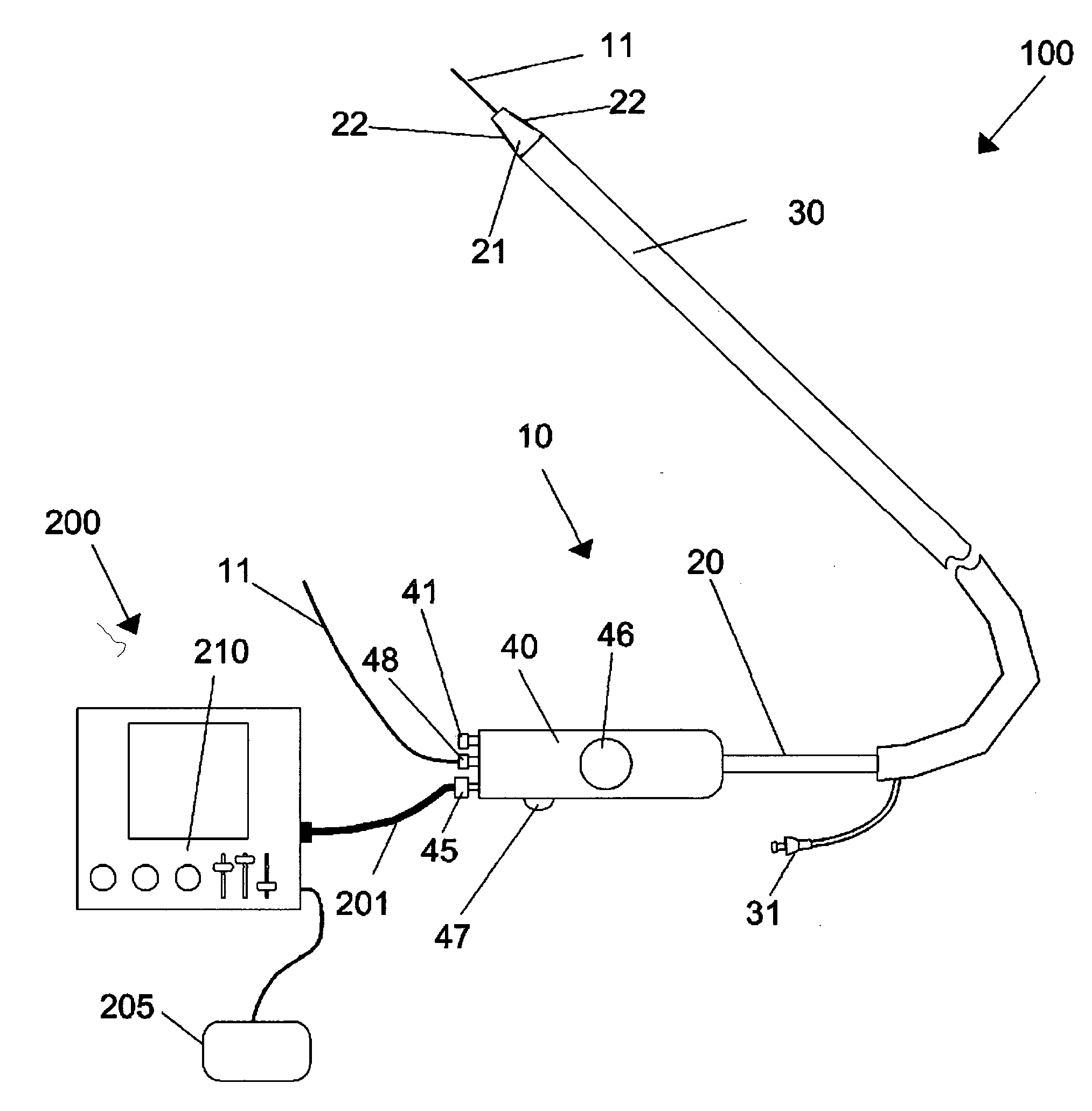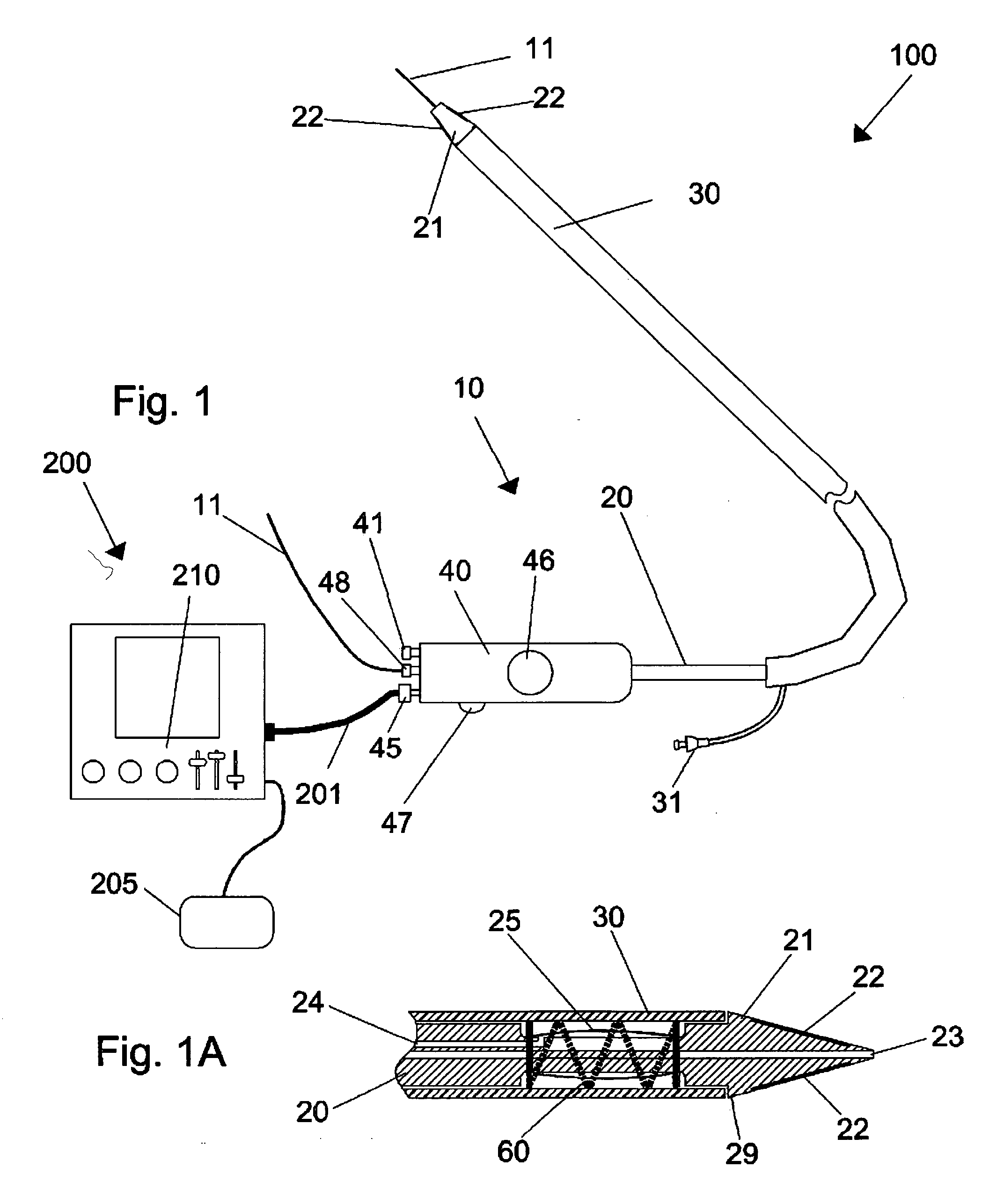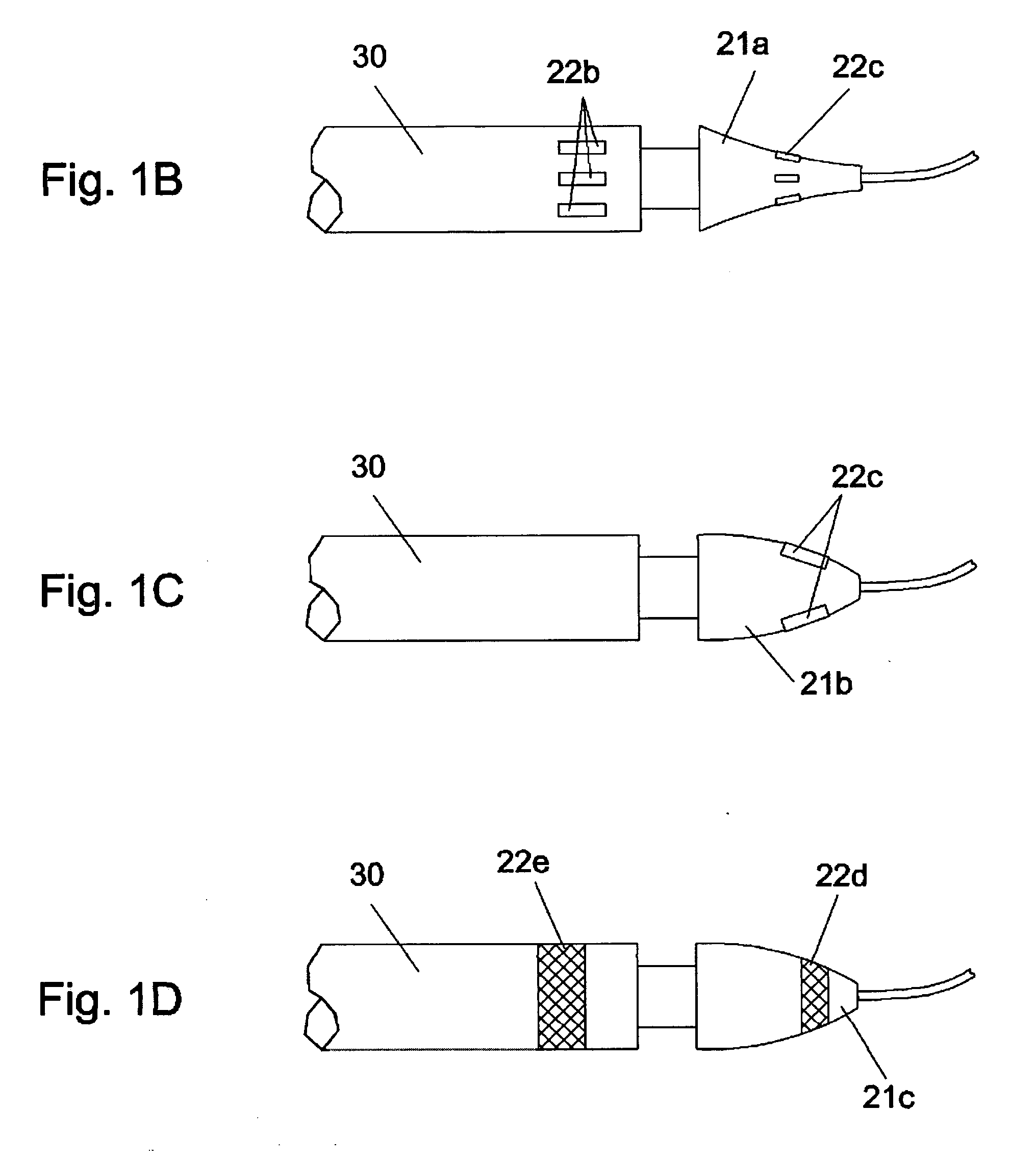Devices, systems, and methods for energy assisted arterio-venous fistula creation
a technology of arteriovenous fistula and energy assisted, which is applied in the field of medical devices and methods, can solve the problems of long recovery time and not always providing clear patient benefits, and achieve the effects of preventing tissue proliferation, preventing bleeding, and providing tension
- Summary
- Abstract
- Description
- Claims
- Application Information
AI Technical Summary
Benefits of technology
Problems solved by technology
Method used
Image
Examples
Embodiment Construction
[0076] Reference will now be made in detail to the present embodiments of the invention, examples of which are illustrated in the accompanying drawings. Wherever possible, the same reference numbers will be used throughout the drawings to refer to the same or like parts.
[0077] Blood flows from the heart via the arterial system to the vasculature of the tissue from which it returns back to the heart via the venous system. Blood returning to the right side of the heart is pumped to the lungs where it becomes oxygenated or re-oxygenated, before returning to the left side of the heart to be pumped to the body's tissues via the arterial system. Blood flow experiences a resistance from all of the systemic vasculature, which is referred to as the systemic vascular resistance (SVR). SVR excludes the pulmonary vasculature, but when these two are combined it is sometimes referred to as total peripheral resistance (TPR). SVR is determined by factors that influence vascular resistance in indiv...
PUM
 Login to View More
Login to View More Abstract
Description
Claims
Application Information
 Login to View More
Login to View More - R&D
- Intellectual Property
- Life Sciences
- Materials
- Tech Scout
- Unparalleled Data Quality
- Higher Quality Content
- 60% Fewer Hallucinations
Browse by: Latest US Patents, China's latest patents, Technical Efficacy Thesaurus, Application Domain, Technology Topic, Popular Technical Reports.
© 2025 PatSnap. All rights reserved.Legal|Privacy policy|Modern Slavery Act Transparency Statement|Sitemap|About US| Contact US: help@patsnap.com



